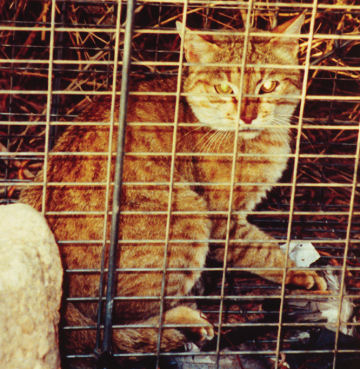The History of Meow
Scientists have traced the history of housecats back to a wild species of cat that lived in the Near East thousands of years ago.
By Emily Sohn
My cat, Abigail, acts like a wild animal sometimes—dashing around the house and pouncing on imaginary prey.
A new study helps me better understand her behavior. It traces the history of the housecat to wildcats that lived thousands of years ago in the Near East (an area that today includes Israel, Turkey, and Jordan). Wildcats are a wild species of cat that is native to parts of Europe, Asia, and Africa.
 |
|
Scientists trapped this Near Eastern wildcat in the Negev desert in Israel. It looks much like the ancestors of modern housecats.
|
| Science |
Researchers from the National Cancer Institute in Frederick, Md., and labs in six other countries analyzed the genetic material DNA from nearly 1,000 modern cats. The animals they studied included show cats raised for competitions, cats from Israel’s Negev desert, and domesticated housecats like Abigail, among others. Domestication is the process of taming wild animals.
No matter where the domesticated cats came from, results showed, their DNA looked more like the DNA of a subspecies of wildcats from the Near East than the DNA from any other subspecies. That zeroes in on the Near East as the place where wild cats first became pets.
Archaeological evidence tells a similar story. Studies of ancient sites show that nomadic people in the Near East started to settle down even before they began planting crops and domesticating animals. Their settlements—especially their trash—attracted hungry animals. As people and cats got used to each other, the two species became friends.
This “seems now to be the context in which the wild cat became the tabby cat,” says Melinda Zeder of the Smithsonian Institution’s National Museum of Natural History in Washington, D.C. She studies animal domestication.
The new study doesn’t say much about the date of cat domestication, and scientists are still debating when it happened. One group of scientists says that people have been caring about cats for at least 9,500 years. Around that time, a cat skeleton was buried next to a human skeleton on the island of Cyprus, say researchers from the National Museum of Natural History in Paris. They’ve been studying the animal’s bones.
Future studies may finally pinpoint the time when “meow” became a household word.







